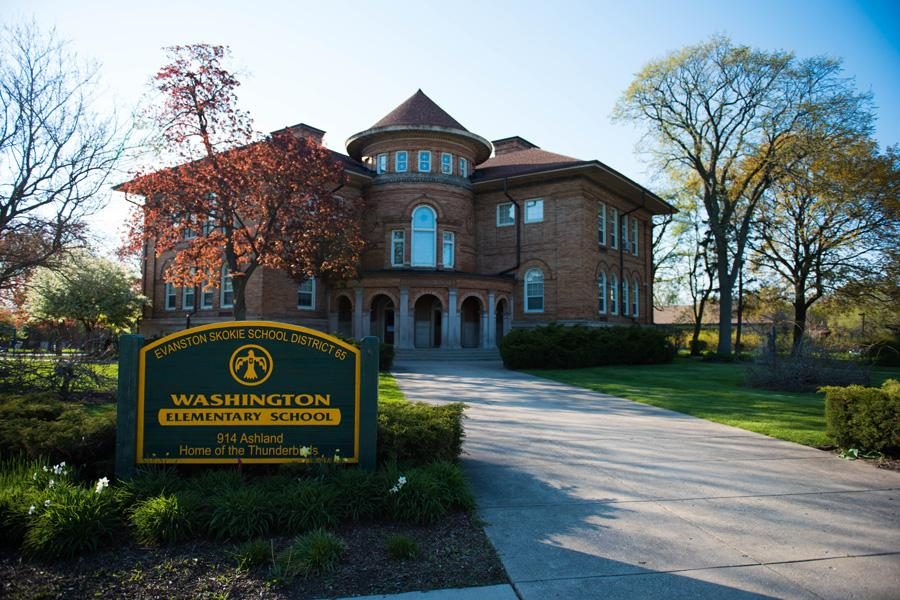District 65 board members raise issues with new school funding formula
Daily file photo by Daniel Tian
Washington Elementary School, 914 Ashland Ave., is one of 10 elementary schools in Evanston/Skokie School District 65. District 65 board members discussed their issues with a new, long-awaited education funding formula that will take effect July 2018.
October 26, 2017
Evanston/Skokie School District 65 officials said new state legislation changing the way schools are funded is a good step forward, but has also brought to light a few concerns.
The new “evidence-based” funding formula — which became law in August after years of negotiation — prioritizes districts with poor property wealth, District 65 board member Candance Chow said. It also establishes a multifaceted procedure to determine each district’s funding need, she said.
When the legislation takes effect in July 2018, it will guarantee that all of the state’s 852 school districts receive at least the same amount of money as last year, and it will infuse $350 million in new revenue into the system.
“The formula is, in the larger scale, a major accomplishment,” Chow said. “There have been huge inequities in state funding.”
However, because District 65 — and Evanston Township High School District 202 — has high property wealth, board president Suni Kartha said it will not see any new money under the formula.
District 65 board members said the provision would not help address the district’s rapidly growing student body.
Roughly 1,500 students were added to the district over the past decade, which required an additional $20 million to support increased staffing and expanded programming. Board members said about 10 percent of the district’s funding comes from the state.
“Even though we’re not going to receive less money than what we got last year, under this new bill we’re not going to get any more money in future years,” Kartha said. “Even if we add students into our district, it means lower state spending per pupil. As the population grows, we’ll have to stretch it out more.”
Still, Kartha said, the bill that passed is better than the initial version, which would have redistributed existing funds rather than add new money. Districts 65 and 202 would have lost $2.2 million and $6.2 million, respectively.
Another point of contention, board members said, is the creation of $75 million in income-tax credits to individuals and businesses that help pay tuition for poor students in private schools.
Chow said it is unclear how the deductions will be paid for, and people are concerned the allotted money will come from the new $350 million meant for public schools. While the $75 million is guaranteed money, the $350 million has not yet been appropriated.
District 65 board vice president Anya Tanyavutti said there may be some “challenges on the horizon” to the income-tax credits, which could jeopardize the new system.
For the formula to go into effect, Tanyavutti said, it needs to stand as a whole — if one element is challenged, the entire agreement is threatened. She added this provision is something board members and the community need to keep in mind going forward.
Officials briefly discussed the legislation at Monday’s joint District 65 and District 202 school board meeting. But Chow said the issue goes beyond just the formula: Illinois is ranked last in funding for education.
“The creation of (the formula) took a long time,” Chow said. “And we are in no way finished in our need for better support… we can’t take our eyes of the ball in education, ever, because it is the most critical service that our state provides.”
Email: [email protected]
Twitter: @rdugyala822


